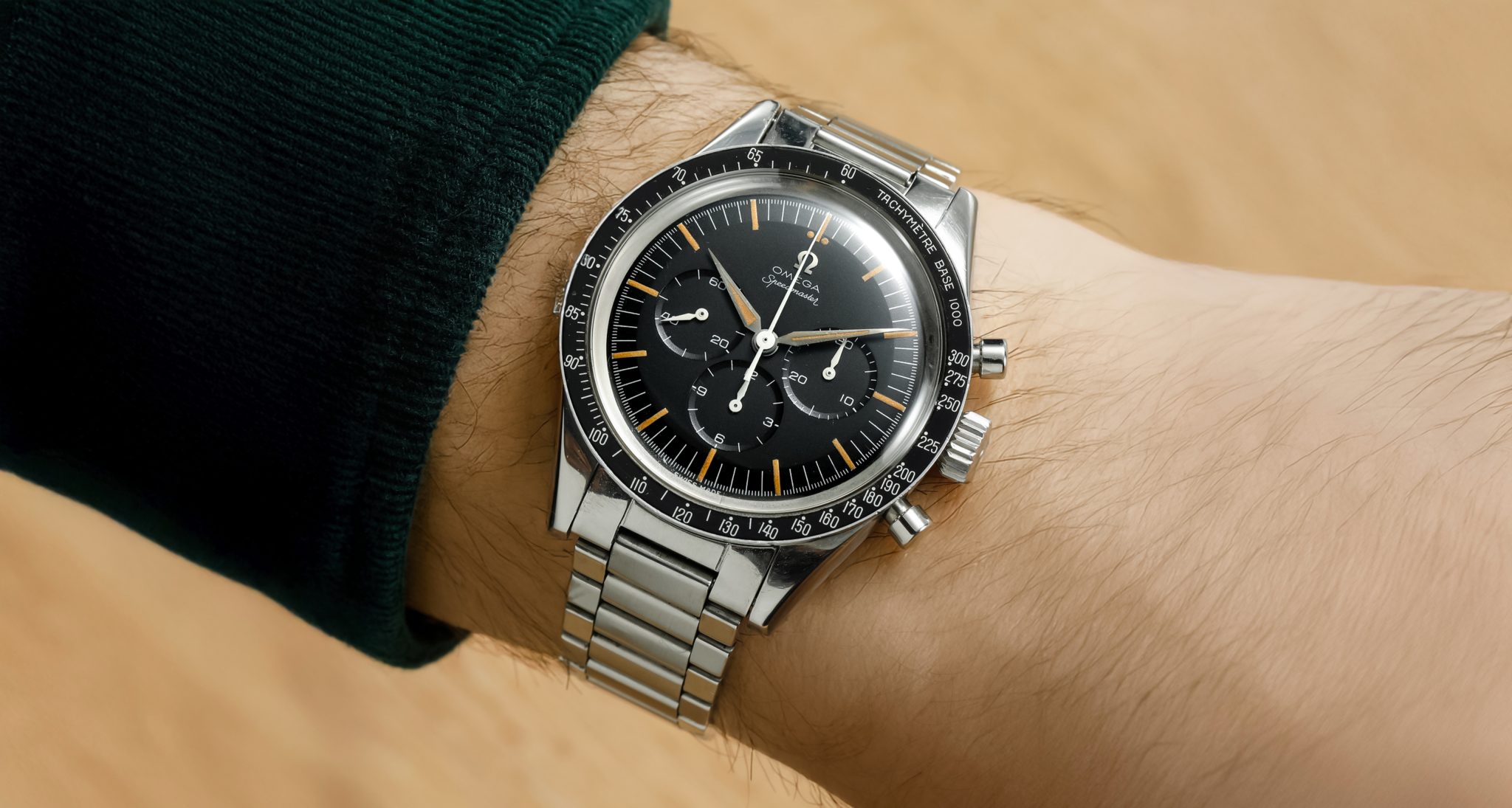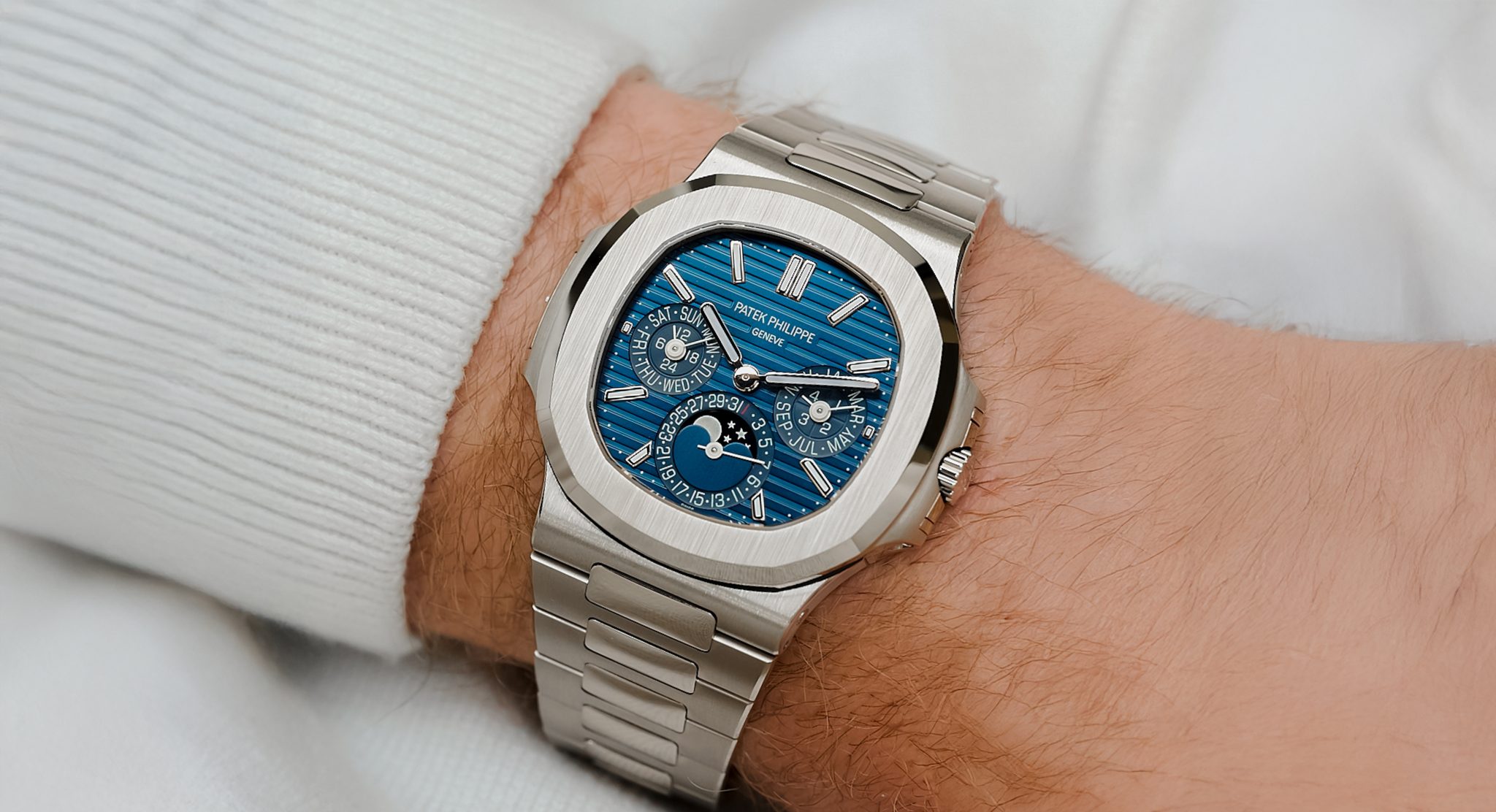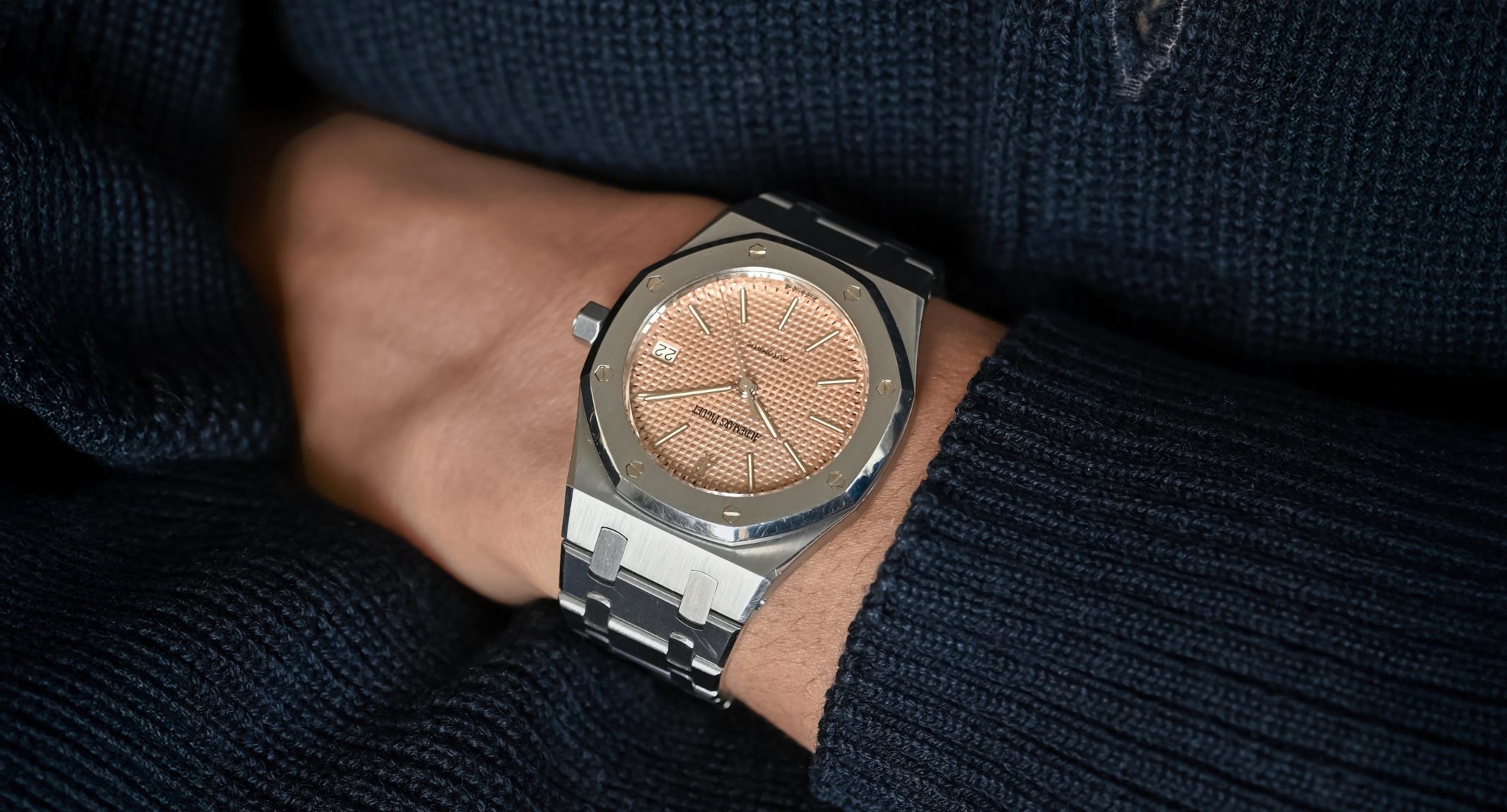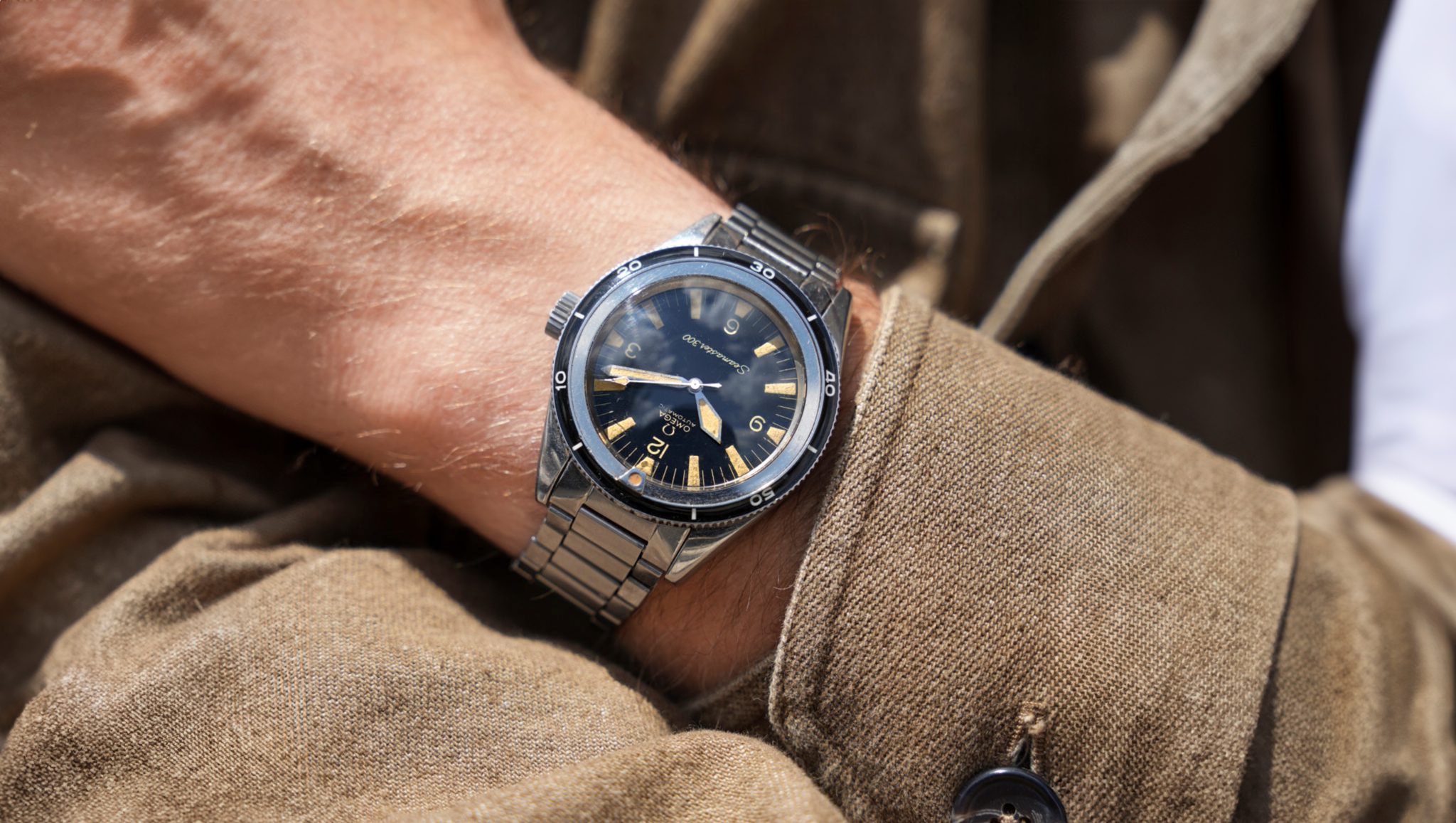
165.014 Omega Seamaster 300
Why is it that transitional references are always criminally overlooked? Often, they’re some of the most interesting . . .and that’s definitely the case here. This is the ref. 165.014. To all intents and purposes, it’s a slightly updated 2913 yet still in the 2913 straight lug case. In many ways, what the Ed White is to the Speedmaster the 165.014 is to the Seamaster line. It is, rather interestingly, just about the only Seamaster 300 where it can be correct to have sword hands in the straight lug case (at the tail end of production), which in many ways is a sweet spot for all things early Professional Omega. Yes, the broad arrow is also great. But the Speedmaster owns those. This is Seamaster 300 only, through and through.

The rocky transitional years started around 1960. This was the last of string of quickly altered transitional references that lasted about 4 years. The Seamaster 300 began with the 2913, then in 1960 we saw the first transitional ref. 14755 with a different caseback and hands. Around 1962, Omega changed their reference system, and so a new name was introduced: the 165.014 we see here. In addition to the new reference, a new dial and new handset were introduced. Interestingly in 1962 the lyre lug case ‘second gen’ Seamaster 300s we know and love were also introduced. The two shared many components from the transitional years both dials and hands. The very end of 165.014 adopted sword hands instead of the baton hands they’re usually seen with, and that really lands it in quite an interesting spot visually compared to anything before or after. It just looks like a 2913 that’s ready to do frogman stuff.
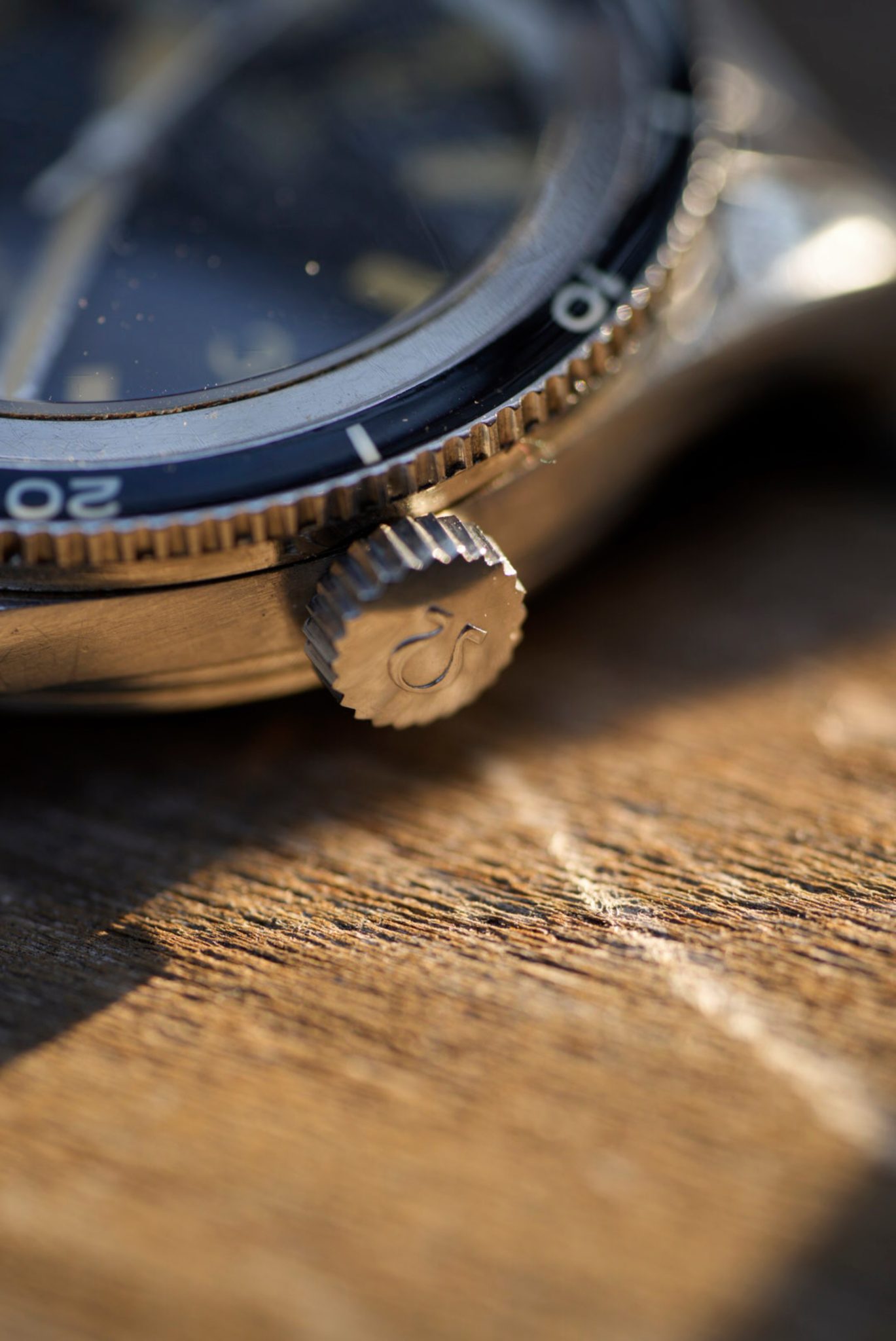
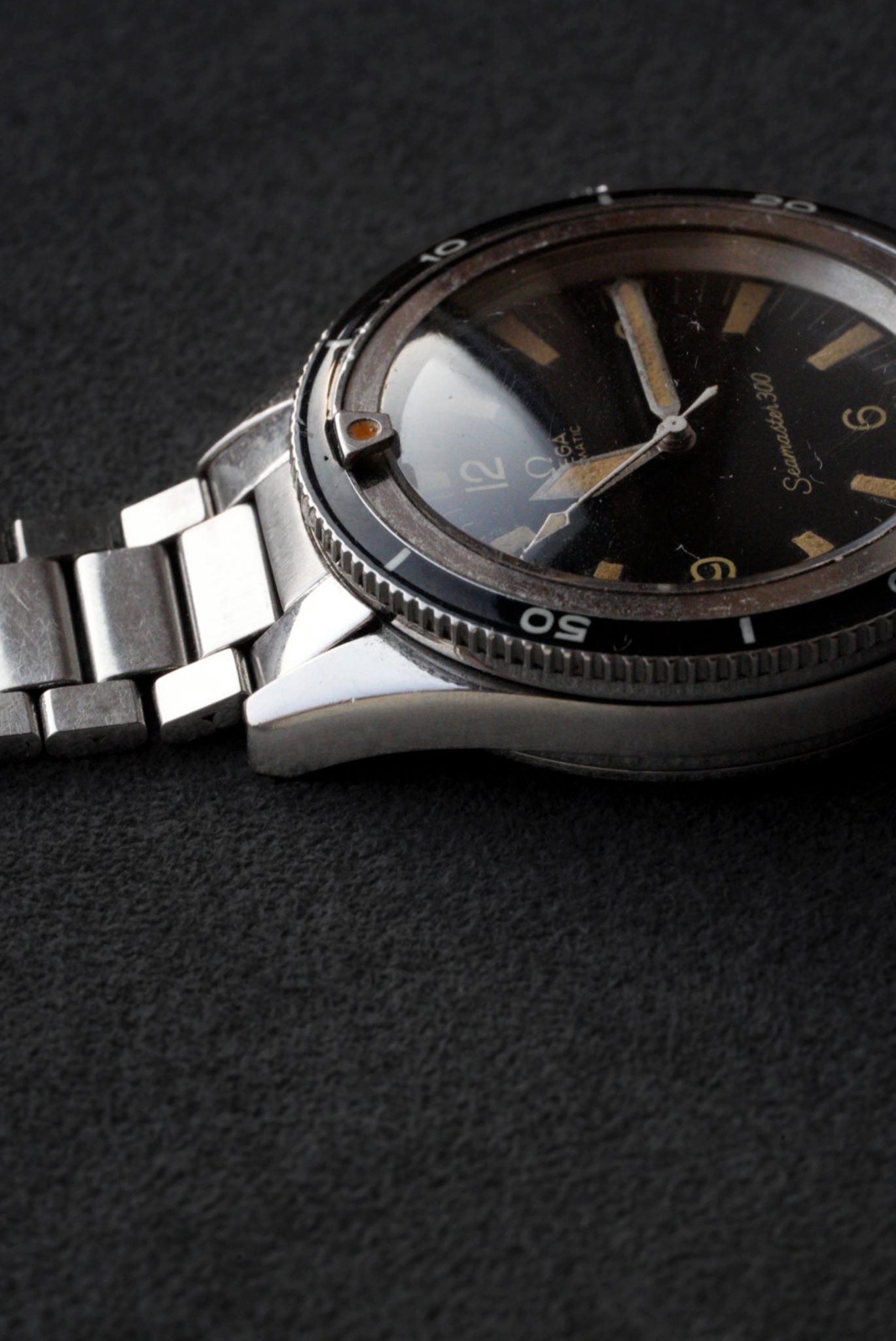
For all that intrigue, relatively speaking, the 165.014 is not looked at with anything like the admiration that the 2913 is. Yes, the 2913 was first. But this is the final straight lug Seamaster 300, shouldn’t that mean something extra? To me it does, but I understand I’m not representative of all collectors. I suspect it suffers from the same issue that the 105.002 does: what I call look-alike-ism. That looks a hell of a lot like an Ed White, but it isn’t one. This looks a hell of a lot like a 2913, but it isn’t one. But maybe that’s no bad thing. It means relatively value-based and under-appreciated markets are still out there for those who know where to look. Transitional watches never cease to be underserved and interesting.
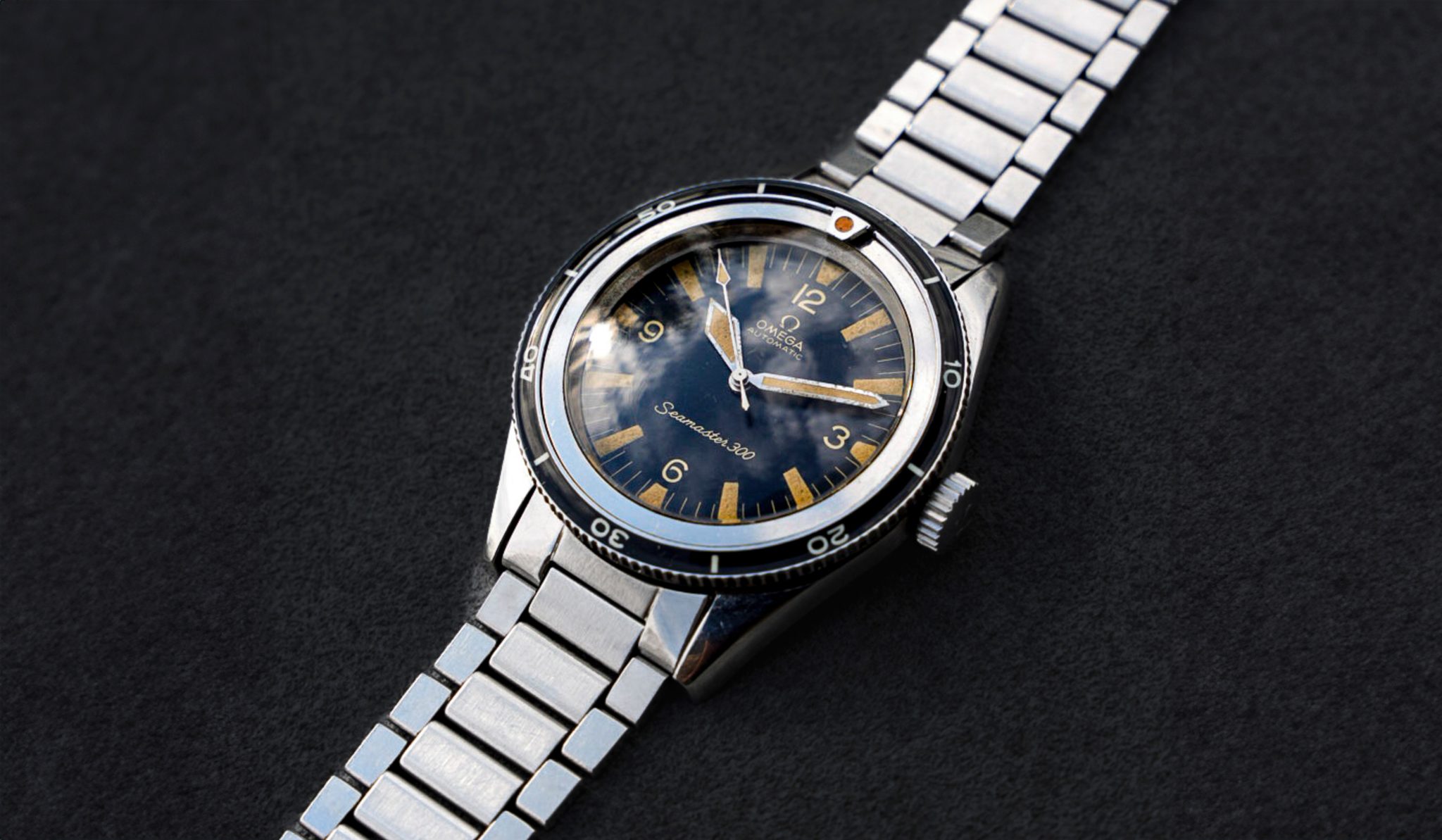
This example looks great from what I can see. You do have to be careful of parts swapping around on these but the patina between the case dial and hands seems quite consistent. Its case is quite strong, may have seen a light polish but only barely. The tritium is almost golden here, a lovely tone. The bakelite bezel appears entirely intact with only light crazing or very minor hairlines. It comes from a well-regarded French retailer.






